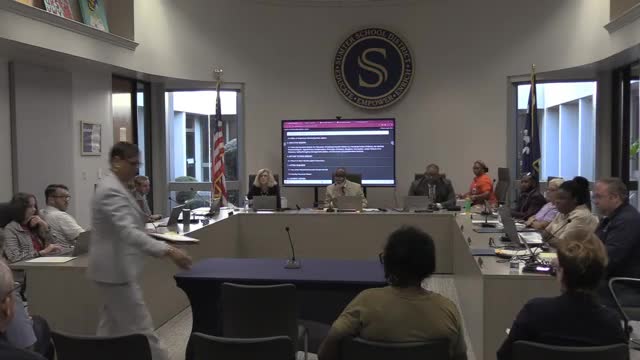School District Faces Attendance Crisis Amid Rising Truancy
August 26, 2024 | Sumter 01, School Districts, South Carolina
This article was created by AI summarizing key points discussed. AI makes mistakes, so for full details and context, please refer to the video of the full meeting. Please report any errors so we can fix them. Report an error »

During a recent government meeting, officials discussed the current state of attendance laws and the challenges surrounding student absenteeism in the school district. The meeting featured a presentation on South Carolina's compulsory attendance law, which mandates that students aged 5 to 17 must attend school regularly. The law specifies that students can only be absent for a total of 10 days in a 180-day school year, regardless of the reason for their absence. Exceeding this limit can classify students as chronically absent, which has significant implications for their academic standing.
The discussion highlighted the distinction between truancy and chronic absenteeism. Truancy is defined as three consecutive unexcused absences or five total unexcused absences, while chronic absenteeism encompasses a broader range of attendance issues. The meeting underscored the importance of educating families about these definitions and the consequences of excessive absences, including potential failures due to missed seat time requirements.
Concerns were raised about the effectiveness of current attendance monitoring practices. Some board members noted that teachers do not consistently take attendance, which complicates efforts to identify and address absenteeism. The district's approach to managing truancy includes sending letters to parents and potentially involving truancy officers, but there is a desire to strengthen these measures and ensure accountability.
The conversation also touched on the financial implications of addressing absenteeism, particularly as funding sources like ESSER are set to expire. Board members expressed the need for clarity on how attendance recovery programs are funded and whether the district can sustain these initiatives without additional resources.
Overall, the meeting revealed a pressing need for improved communication with parents regarding attendance laws and a more robust system for tracking and addressing student absenteeism. Board members emphasized the importance of collaboration between schools, families, and the community to tackle these challenges effectively.
The discussion highlighted the distinction between truancy and chronic absenteeism. Truancy is defined as three consecutive unexcused absences or five total unexcused absences, while chronic absenteeism encompasses a broader range of attendance issues. The meeting underscored the importance of educating families about these definitions and the consequences of excessive absences, including potential failures due to missed seat time requirements.
Concerns were raised about the effectiveness of current attendance monitoring practices. Some board members noted that teachers do not consistently take attendance, which complicates efforts to identify and address absenteeism. The district's approach to managing truancy includes sending letters to parents and potentially involving truancy officers, but there is a desire to strengthen these measures and ensure accountability.
The conversation also touched on the financial implications of addressing absenteeism, particularly as funding sources like ESSER are set to expire. Board members expressed the need for clarity on how attendance recovery programs are funded and whether the district can sustain these initiatives without additional resources.
Overall, the meeting revealed a pressing need for improved communication with parents regarding attendance laws and a more robust system for tracking and addressing student absenteeism. Board members emphasized the importance of collaboration between schools, families, and the community to tackle these challenges effectively.
View full meeting
This article is based on a recent meeting—watch the full video and explore the complete transcript for deeper insights into the discussion.
View full meeting